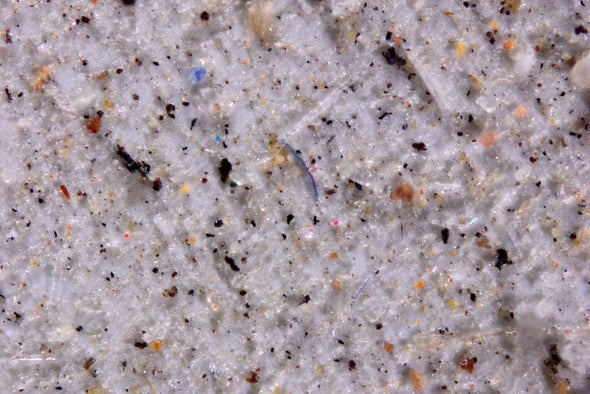
Carried by the wind, dust particles from places such as the Sahara Desert can float halfway around the world before settling to the ground. As the plastics discarded by humans break down into tiny pieces in the environment, they, too, drift through the atmosphere. Now scientists are a step closer to understanding how these globe-trotting microplastics travel—both locally and on long-distance flights.
Researchers spent more than a year collecting microplastics from 11 national parks and wilderness areas in the western U.S. They separately examined the particles that settled on dry days and those that fell along with rain or snow. In addition to shedding light on how microplastics move around, the results, published on Thursday in Science, reveal the sheer scale of the problem: more than 1,000 metric tons of microplastics—the weight of 120 million to 300 million plastic water bottles—fall on protected lands in the country’s western region each year. The new findings add to scientists’ concern over microplastic pollution’s potential impacts on the environment and human health. “We’re not supposed to breathe in this material,” says Steve Allen, a microplastics researcher at the University of Strathclyde in Scotland, who was not involved in the new study. Plastics in the environment “carry all sorts of pesticides, heavy metals and all the other chemicals that we've made over time,” he adds. “They're going to carry them directly into our lungs.”



Comments
Post a Comment